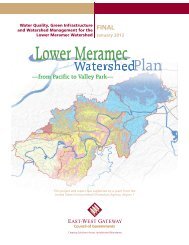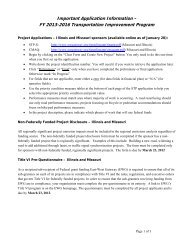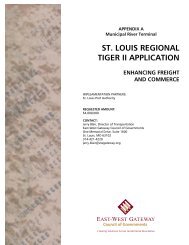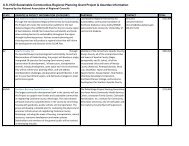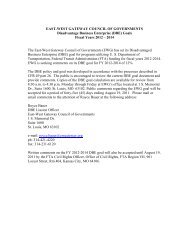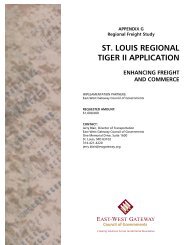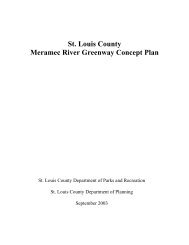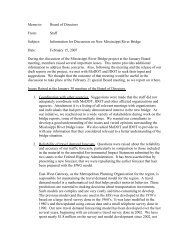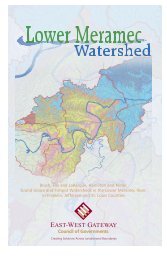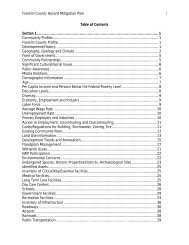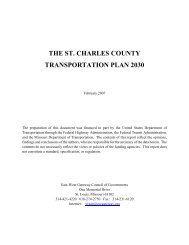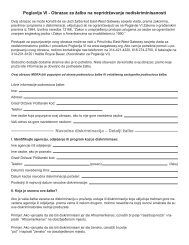Jefferson County - East-West Gateway Coordinating Council
Jefferson County - East-West Gateway Coordinating Council
Jefferson County - East-West Gateway Coordinating Council
Create successful ePaper yourself
Turn your PDF publications into a flip-book with our unique Google optimized e-Paper software.
A Regional Overview All-Hazard Mitigation Plan 103<br />
Financial Negligible<br />
Comments <strong>Jefferson</strong> <strong>County</strong> has been proactive in protecting those<br />
At-risk residents by organizing OWS.<br />
Recommendation<br />
Educate those people who work outdoors of the dangers of extended exposure to a<br />
combination of high temperatures and high humidities. The people to be educated are<br />
those at risk including:<br />
• "Homeless" living outside<br />
• Poor, elderly, chronically ill persons living alone<br />
• Individuals working outside in extreme heat<br />
Dam Failure Hazard Profile<br />
The purpose of a dam is to impound (store) water, wastewater or liquid borne materials for<br />
any of several reasons, including flood control, human water supply, irrigation, livestock<br />
water supply, energy generation, containment of mine tailings, and recreation or pollution<br />
control. Many dams fulfill a combination of the above functions.<br />
Manmade dams may be classified according to the type of construction material used, the<br />
methods used in construction, the slope or cross-section of the dam, the way the dam<br />
resists the forces of the water pressure behind it, the means used for controlling seepage<br />
and, occasionally, according to the purpose of the dam.<br />
The materials used for construction of dams include earth, rock, tailings from mining or<br />
milling, concrete, masonry, steel, timber, miscellaneous materials (such as plastic or rubber)<br />
and any combination of these materials. Dams are owned and operated by individuals,<br />
private and public organizations and the government. Associated works include spillways,<br />
water supply facilities, and lake drain structures. Most dams have an earth embankment<br />
and one or two spillways.<br />
Embankment dams are the most common type of dam in use today in Missouri (99% of all<br />
dams in Missouri are made of earthen materials, the 1% are constructed of concrete).<br />
Materials used for embankment dams include natural soil or rock, or waste materials<br />
obtained from mining or milling operations. An embankment dam is termed an “earthfill”<br />
or “rockfill” dam depending on whether it is comprised of compacted earth or mostly<br />
compacted or dumped rock. The ability of an embankment dam to resist the reservoir<br />
water pressure is primarily a result of the mass weight, type and strength of the materials<br />
from which the dam is made.



